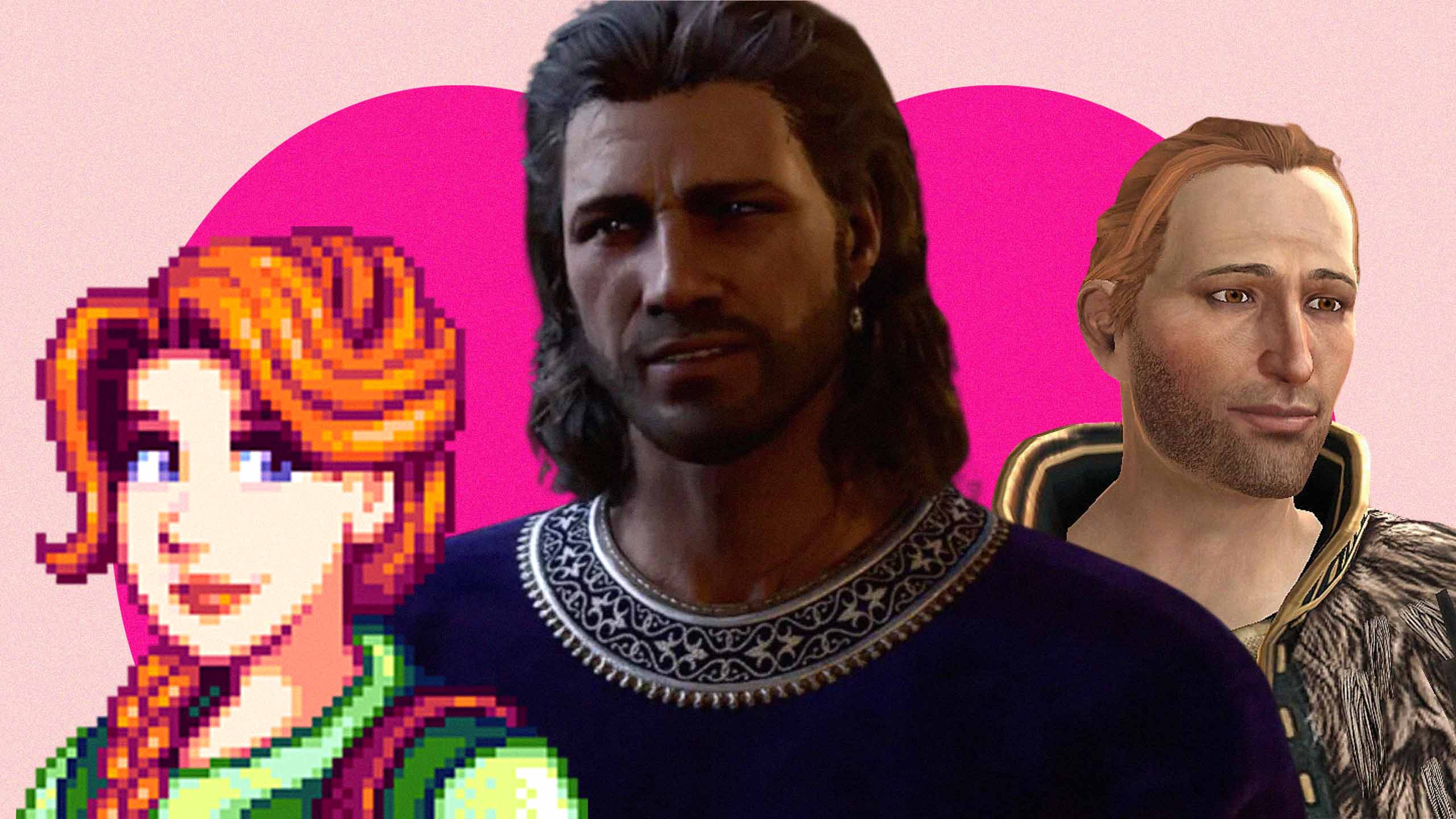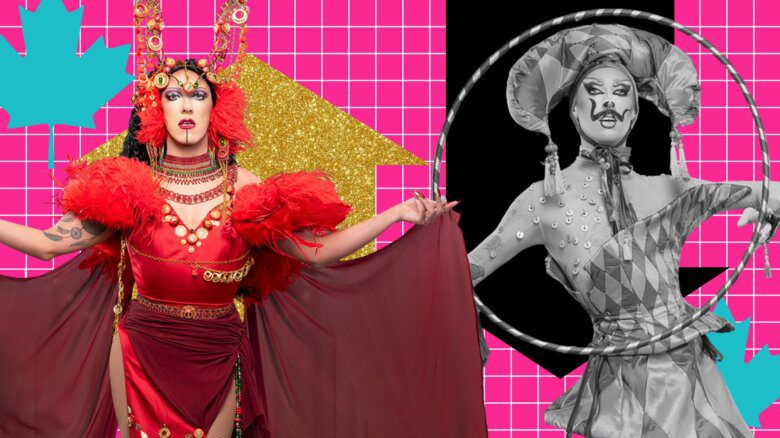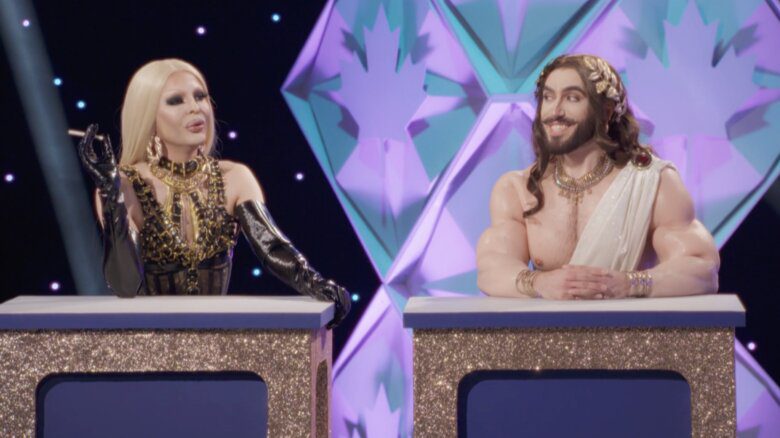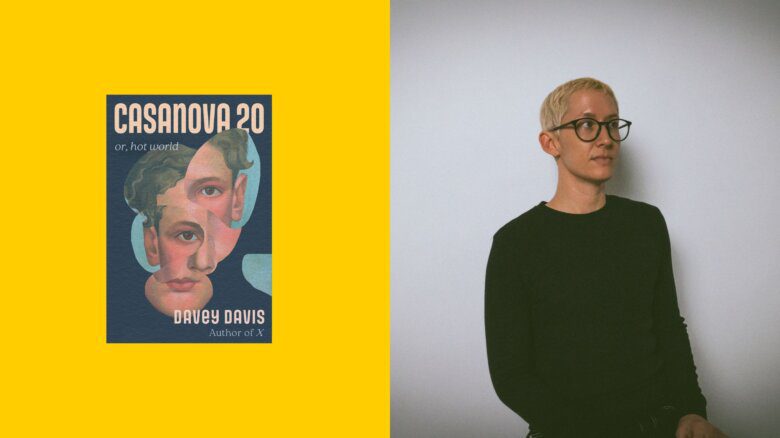Controversial opinion time: Dragon Age II is the best game in Bioware’s Dragon Age franchise. I would even go so far as to say that it’s one of the best video games ever.
True video game connoisseurs are likely rolling their eyes at this point. And they’re not wrong to. Dragon Age II was put together on a rushed timeline (barely a year and a half of development), and the cut corners are obvious: maps repeat over and over, the fighting design is bad, the loot is boring, the armour uninspiring.
But what hooked me was the writing—particularly the characters. The game revolves around a group of six companions who join your player-character, Hawke, to protect the city of Kirkwall. Your companions are simultaneously infuriating and compelling: they fight with each other, they help you, they betray you and (most importantly) they fall in love with you. Of the game’s four romanceable characters, all four are bi or pansexual: interested in the player character no matter their gender.
When Dragon Age II was released in 2011, its sheer number of queer romance options was an anomaly. Games like the Sims (2000) and Fable II (2008) allowed gay relationships, although they usually weren’t paired with a long romantic storyline. Bioware cultivated a reputation for being queer-friendly; Star Wars: Knights of the Old Republic (2003) and Mass Effect 1 (2007) and 2 (2010) all included queer romance options.
What set Dragon Age II apart from its competition was abundance. If you wanted to pursue a queer relationship, you had exactly the same number of potential companions as someone looking to pursue a straight relationship. And these relationships would be as deeply drawn and as beautifully animated as the straight ones.
I found this game mechanic, now dubbed “playersexuality,” liberating. In other video games, my favourite characters were often locked away from me by my choice of gender. If I wanted to, say, pursue Tali’Zorah in Mass Effect, I had to start the game over as a male protagonist. No such calculations were necessary in Dragon Age II. And it wasn’t just the freedom I appreciated: as a recently out bisexual, I was also smitten with a game that let me play the hero alongside a group of queer, pan and bisexual characters.
Since Dragon Age II, more and more games use a playersexual approach to romance, from indie games like Stardew Valley (2016) and Boyfriend Dungeon (2021), to big-budget role-playing games like Baldur’s Gate 3 (2023). The fourth installment in the Dragon Age series, The Veilguard (2024), has also re-embraced playersexuality, with all seven of the companions available for a player character to pursue.
But while playersexuality attracted me to the Dragon Age franchise, it has also been a lightning rod for very disparate groups of gamers. Conservative players, for example, argued that the LGBTQ2S+ relationships in Baldur’s Gate 3 were shoehorned in to “satisfy diversity quotas.” Players of Dragon Age II complained that the companion Anders would always flirt with Hawke (male or female), which made it impossible to avoid queer content; they derided the all-bisexual cast as unrealistic, and as abandoning Bioware’s “main demographic” (straight male gamers).
While their motivations are wildly different from conservative reviewers, some queer players also view playersexuality as empty inclusion. Playersexuality gets derided as a lazy shortcut by game writers and developers who can’t be bothered to write properly queer (or straight) characters. For these players, playersexuality is not representation—it allows the player to pursue queer relationships, but without queer characterization. Queerness is not a fundamental part of the character’s identity; it’s a tactical decision to make gameplay easier, rather than a writing choice about a character’s innate traits
It’s not hard to understand why critics see playersexuality as a time-saving shortcut. Dragon Age II’s abundant romance options were explicitly the product of the game’s time crunch. In an interview with Kotaku, Dragon Age II’s lead writer David Gaider explained that the shortened development schedule meant the writers only had time to develop four romance options: “If we decide to make them sort of a spread of sexualities that are immutable, then there’s no choice for the player. They have one character available to them, and we didn’t like that idea.”
At the same time, making a romance accessible to all players doesn’t always save labour. In Dragon Age: Inquisition (2014), Iron Bull’s romance was originally restricted to characters of specific species because of Bull’s anachronistic character design. Opening up his romance to all player characters was only possible because the cinematic designers put in massive amounts of time to make multiple versions of the romance scenes. Meanwhile, fans speculate that the reason Inquisition characters Cullen and Solas have such restricted romances (they can only be pursued by female elves and, in the case of Cullen, humans), is because they were last-minute romance additions to Inquisition.
For some fans, there’s a difference between playersexual characters, who have no sexual orientation beyond the player character, and bi or pan characters. Fans squabble heavily over whether certain characters “count” as bisexual—in forums, you’ll see some people argue that Dragon Age II companions aren’t bisexual in contrast to Baldur’s Gate 3; while others will point to Baldur’s Gate 3 as an example of crude playersexuality in contrast to the “good” bisexual representation in Dragon Age II. Even game developers seem to use the terms interchangeably: in one interview, the writers of Baldur’s Gate 3 said that all the companions are pansexual, and a few lines later, called their characters “playersexual.” The term “playersexuality” itself is nebulous, with no agreed-upon definition or clear origin point (it seems to have emerged organically around 2016 in in video game fandom).
Leah in Stardew Valley is a good example of a purely playersexual character. Her entire sexual orientation—nay, her entire backstory—has been constructed to make Leah available to you (whoever you are). As players have discovered, if you play a man, Leah has an ex-boyfriend, but if you play a woman, Leah has an ex-girlfriend. The game even substitutes in an alternate animation to Leah’s ex when they come to visit.
But Leah is much more the exception than the rule. Companions like Bellara (Veilguard), Gale (Baldur’s Gate 3) and Anders (Dragon Age II) have prior relationships they’ll talk about in-game—and not ones that change according to your gender (although Anders will only discuss his ex-lover Karl with a male Hawke). Some of your companions will hook up—or pair up—if you don’t pursue a relationship with them, like Lace Harding and Taash (Veilguard), and Lae’zel and Astarion (Baldur’s Gate 3). And unlike Stardew Valley where all the “canonical” couples are straight, Dragon Age II, Veilguard and Baldur’s Gate 3 include queer pairings between non-player characters like Dame Aylin and Isobel. Queerness is an independent part of both the world-building and of individual character’s identity.
Many of the arguments against playersexuality, moreover, are tinged with biphobia. Fans demand canonical evidence that characters like Fenris or Harding are “bisexual” and not “just” playersexual; writers and fans argue that Astarion’s flamboyant mannerisms mean he’s a “gay-coded” character whose gayness has been erased by his pansexuality; others say that it’s just not “realistic” to have this many bi characters in a cast. These arguments all veer close to classic biphobic tropes: that bisexuality doesn’t “count” unless it’s been proven, that bisexuals are secretly monosexual and that “real” bisexuality is rare and otherwise a kind of fad.
There is, in some of these complaints, a sense that a bisexual character just isn’t queer enough to count. One of the most common arguments against playersexuality is that it’s impossible for writers to tell queer stories with an all-bisexual cast. The story of Dorian in Dragon Age: Inquisition, in which Dorian escapes his family after they try to force him through magical conversion therapy, is held up as the example of a story that could not exist in a playersexual cast. But while you could not tell Dorian’s exact story with a bisexual character, you could tell a pretty close one: many bisexuals and pansexuals also have traumatic coming-out stories with their family; many are subjected to familial violence. And there are plenty of queer stories among the all-bisexual/pansexual casts of Dragon Age II, Baldur’s Gate 3 and Veilguard, from Karlach’s inability to touch her lover, to Anders’s trauma over his forbidden relationship, to Leliana’s tendency to fall in love with the powerful women who employ her.
Of course, it is obviously a fantasy to have a group of four, or seven or eight characters who are all bisexual and all interested in you. But when we’re playing a game like Baldur’s Gate 3 or Dragon Age: The Veilguard, we’re all pursuing a fantasy. In these kinds of role-playing games (RPGs), the player character is a black hole who warps the storyline around them. Your companions abandon their lives, sacrifice their interests, change their ideals to follow you. So why is this player-centric power fantasy only a problem when it comes to sexuality (and not, say, when it comes to the inclusion of dragons)?
The debate around playersexuality stands in for a larger debate about what kind of queer fantasy players want in video games. It’s perfectly valid for a player to want an RPG (or a dating sim) with clearly defined sexualities. It makes sense for a player to want to be excited by a lesbian character and not just a broadly Sapphic one. At the same time, I bristle at the idea that defined sexualities, locked by gender, are the forms of queer gaming. It seems myopic to view “good representation” as only those games whose romances follow 21st-century Western ideas of sexual orientation. I value the utopia of an all-queer cast, the joy of a chaotically bisexual troop of heroes, the abundance of unlocked romance options, the ability to explore many different kinds of queer relationships. There are a variety of ways for game writers and developers to thoughtfully include queer relationships.
Unfortunately, it’s not possible for writers and game developers to fulfill everyone’s ideal queer fantasy in a single game. The good news is that there are now many games—both indie and Triple-A—that incorporate LGBTQ2S+ romance options of some stripe. Some use playersexuality. Some don’t. Even in the Dragon Age franchise, there is variety: the first and third game include defined sexualities, with characters either straight, bisexual or gay/lesbian. And that variety, that abundance, is a good thing. We are no longer in the same place of scarcity, where one big-budget game with a gay character was the only queer representation we might see all year and where one gay character had to carry the hopes and fantasies of an entire gaming community. There are a plethora of queer storylines, and we’re just now getting to the point where there are enough games to tell all those stories. As for me? I’ll be out in Veilguard, recruiting my merry band of pansexuals on the way to saving the world. Maybe some of you will join me.


 Why you can trust Xtra
Why you can trust Xtra


